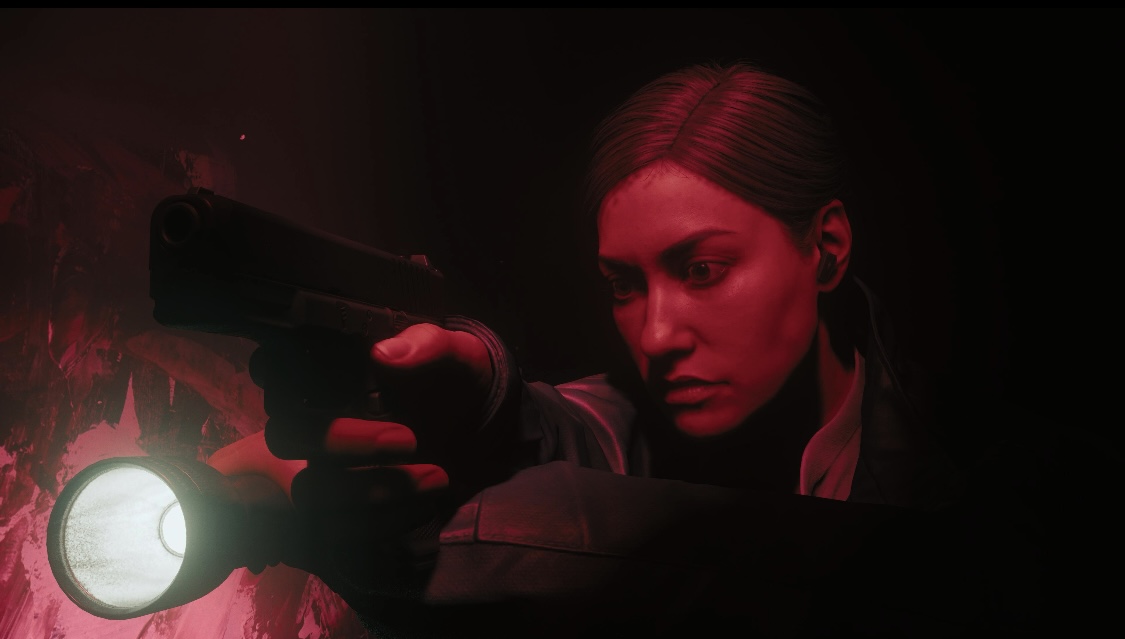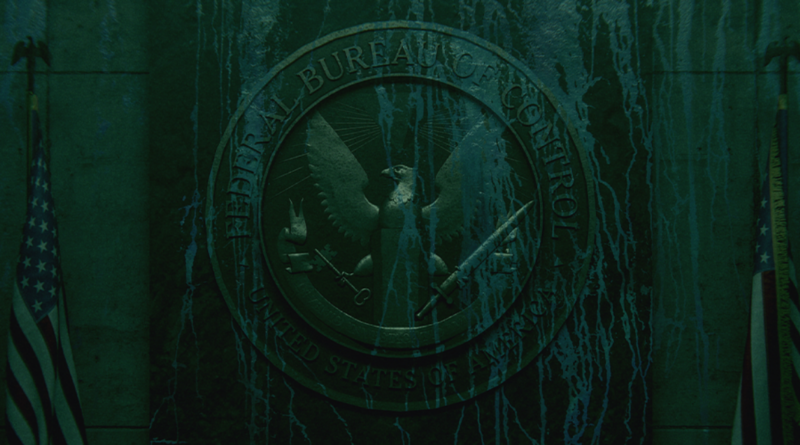Alan Wake 2 “The Lake House”, The Latest Entry in Gaming’s First Shared Universe
This October, fans of Alan Wake 2 (2023), the mind-bending, supernatural survival-horror epic, get to return to Cauldron Lake in the game’s second and final expansion, “The Lake House.” The Alan Wake franchise was created by Remedy Entertainment, the Finnish video game developer best known for the Max Payne franchise. Boasting a reputation for impressive storytelling, incorporating multimedia elements, and casting Hollywood actors to play their characters in-game and in live-action, Remedy has also established the first shared universe in gaming, the Remedy Connected Universe. “The Lake House” serves as a follow-up to Remedy’s previous game, 2019’s Control, as well as a prequel to Alan Wake 2. How does a video game franchise keep up a shared universe? “The Lake House” shows us how it’s done.
Control and Alan Wake have an interesting, recursive relationship. Control recontextualizes Alan Wake, now Alan Wake recontextualizes Control. The Alan Wake franchise is about the title character (played by Ilkka Villi, voiced by Matthew Porretta), a crime writer who becomes trapped in The Dark Place, a dimension at the bottom of Cauldron Lake that makes his fiction into reality. For 13 years, he attempts to write his way out. Alan Wake 1 (2010) established that the supernatural was real and powerful; Control established that it was plentiful.
Control follows Jesse Faden (Courtney Hope), the survivor of a supernatural incident that was covered up by the FBC, the Federal Bureau of Control. Jesse discovers the FBC’s headquarters, a magical building called The Oldest House, and after saving it from an inside threat, becomes its next Director. Its biggest inspiration comes from the internet’s SCP Foundation, which, like the FBC, is an organization that captures, catalogs, and studies supernatural phenomena. What Control does so brilliantly is provide the terminology, like AWEs (Altered World Events), and the plausibility needed to interface Alan Wake into this new, shared world.

Control’s second expansion, entitled “AWE,” (which also stands for Alan Wake Expansion), officially christened the RCU as Alan Wake’s return saw Jesse written into the role of his reducer in another attempt to escape the Dark Place. Jesse’s last appeared in AW2’s first expansion, “Night Springs,” which presented three episodic adventures, each in the style of a Twilight Zone riff written by Alan himself, where a different protagonist attempts to save him. The hijinks of the “Night Springs” episodes feature the most connective tissue the RCU has ever seen, but “The Lake House” rolls back the camp to return to the supernatural horror that both franchises are known for.
The titular Lake House facility was referenced in the story of AW2 by the DLC’s protagonist, FBC Special Agent Kiran Estevez (Janina Gavankar), who was name-checked in “AWE” and showed up in the flesh at the midpoint of AW2. The FBC has been monitoring Cauldron Lake since the events of AW1, and in their Lake House facility, seek to study its dark power by experimenting with Alan’s writing and the paintings of an artist named Rudolph Lane. It’s implied that Alan wrote the staff into another story in a failed escape attempt from the Dark Place. The story subtly lambasts AI “art” as the staff devise machines to fabricate pages that resemble Wake’s and even kidnap artists to churn out content for their experiments but alas, the Dark Place does not recognize them as true art.
Visually, the expansion brilliantly mixes the spooky Pacific Northwestern aesthetic of AW2’s nature with the brutalist, Cold War era architecture of Control’s interior spaces. By juxtaposing the visual languages of the two pillars of the Remedy Connected Universe, we behold the apotheosis of Remedy’s vision. If “AWE” was the moment these stories became known to one another, “The Lake House” is where they reach a symbiosis, not just in terms of narrative and aesthetic, but in gameplay.
A staple of Control was the plentiful FBC documents, audio logs, and instructional films sound its levels, each one potentially filled with enriching lore, a smart gag, or even references to other Remedy games. “The Lake House” has these, too, but with a runtime of about 3 hours, you’ll be reading more often than you’re engaging in combat. Like Control, this expansion tells most of its story via these multimedia elements, filling in our understanding of its chief characters in retrospect. These readables feel almost more at home in AW2’s methodical survival-horror atmosphere than Control’s fast-paced shooting gallery.
By far, the expansion’s greatest achievement is Agent Estevez. While she was introduced in the base game, she truly shines here. She’s a seasoned FBC Agent, always able to cite some official jargon in the face of the insane, but despite this, she still has to take deep breaths after seeing the new Painted enemies, Demogorgon-like monsters born from paintings. However, the parts I enjoyed the most were in-scene conversation between Estevez and a sentient painting, finding ways to relate to it and possibly help it. In the midst of a supernatural horrorshow, she chooses empathy and understanding. Estevez is a healthy dose of reality in a game, series, and universe that works in abstracts more often than not.

Given its proximity to Control and its potential for some juicy lore, I can’t say that I wasn’t expecting a little more from “The Lake House,” but for what it is, it’s not bad. A short, punchy experience, this DLC represents Remedy’s understated approach to worldbuilding. Unlike other attempted shared universes, like the DCEU or Universal’s failed Dark Universe, the Remedy Connected Universe has been careful not to overextend. Conservatively, a total of 3 games, the two Alan Wake titles and Control, are canon. That doesn’t include special cases like Quantum Break (2016), the offspring of Remedy’s brief partnership with Microsoft. Microsoft owns the rights to Quantum Break, but Remedy has found ways to integrate its characters and storylines into the RCU via multiverse theory, (and legal gray areas). Shawn Ashmore’s Tim Breaker in AW2 is a thinly veiled stand-in for his character Jack Joyce from Quantum Break. Remedy seemingly plans to continue the modified Quantum Break story in the margins of the RCU, piggy-backing off the games they can legally make.
Remedy has kept this universe lean by carefully curating what stories are a part of it. Franchises like Kingdom Hearts, which are sprawling with sequels and spinoffs, or Persona, which take a more anthology-like approach, may seem similar to the RCU on the outside, but ultimately, their titles are united under only one franchise. While some installments might have distance from each other or appear unrelated, they still remain sequels. Alan Wake and Control are not sequels to one another. They are two distinct texts in conversation, using their connection to further each other’s plots. Think of the RCU in a spatial sense rather than a linear, sequential one. It’s a narrative sandbox, an environment for stories to grow together and shape one another, as opposed to being linked in a greater chain.

Looking to the future, the Remedy has multiple titles and dangling plot threads to anticipate. Control 2 is confirmed to be in development as well as the recently revealed FBC: Firebreak, a first-person co-operative shooter set in the FBC’s headquarters. “The Lake House” being a self-contained prequel means that it was concluding AW2 rather than setting up future plot points, and for that, I admire the restraint. Remedy is clearly devoting their energy to Control 2, “The Lake House” acting as Alan Wake’s swan song. If this is the last we see of the franchise (he’ll be back), this wasn’t a bad way to go out. Far from it, in fact. This is a series about the vices and virtues of creativity, and its final word being a middle finger to AI is better than anything I could have hoped for.
What Remedy is doing is the most exciting initiative in gaming. The shared universe as a storytelling device has always fascinated me, and the way that Remedy is going about constructing theirs puts many of its contemporaries to shame. “The Lake House,” while not a paradigm-shifting installment, has succeeded in pushing this universe ever closer, playing the relatively small scale of the Remedy Connected Universe to its strength instead of shrinking from it as if it were a flaw. Remedy isn’t just playing the shared universe game; they’re winning it.

